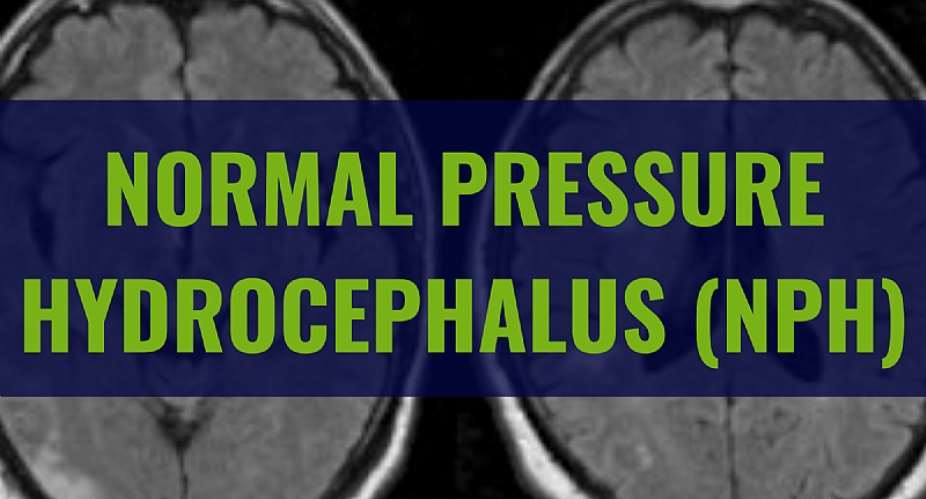Normal Pressure Hydrocephalus (NPH) is a disorder that is sometimes overlooked, yet it has a substantial influence on people's lives, especially those of older adults. I have seen firsthand the difficulties experienced by NPH patients as well as the value of early detection and treatment. The hallmark of NPH is an abnormal build-up of cerebrospinal fluid (CSF) in the brain's ventricles, which causes the fluid-filled cavities to grow. In contrast to other types of hydrocephalus, the pressure inside the brain stays within normal bounds; however, the enlarged ventricles press against the surrounding brain tissue, resulting in a triple set of symptoms: impaired walking, reduced cognitive function, and incontinence.
It is essential to identify NPH symptoms in order to take prompt action. The gait abnormalities frequently show themselves as stumbling steps, trouble elevating the feet, and problems with balance. Cognitive alterations can manifest as poor executive function, trouble focusing, and forgetfulness. Urinary incontinence is another common symptom, especially when there is an urge to urinate. A thorough medical history, neurological examination, imaging studies like MRIs or CT scans, and specialized tests like lumbar punctures to measure CSF pressure and drainage to track changes in symptoms are all part of the diagnostic process for NPH. This evaluation is performed by a neurologist or neurosurgeon.
After NPH is identified, treatment usually entails surgery to remove or divert extra CSF in order to reduce pressure on the brain. Surgery to treat NPH is frequently and successfully accomplished using ventriculoperitoneal shunting, a process in which a shunt is implanted to reroute CSF from the brain to the abdomen section. But deciding who is a good candidate for surgery needs careful consideration. Patients must be carefully chosen for shunting since not all NPH patients are good candidates. A lumbar drain may occasionally be utilized as a temporary CSF drain in order to better select patients and forecast the possible advantages of shunting.
It is important to remember that, even though surgery can greatly reduce symptoms, NPH management nevertheless heavily depends on continued care and rehabilitation. For those with this illness, physical therapy, occupational therapy, and cognitive exercises can help maximize mobility, cognitive function, and general quality of life. Notwithstanding the difficulties caused by NPH, improvements in surgical methods and diagnostic approaches provide promise for improved results. Neurosurgery research and innovation are always looking for novel ways to treat patients, such as less invasive procedures and alternative therapies. These can be choices for those who are not good candidates for standard shunting procedures.
In conclusion, a multidisciplinary approach is necessary for the optimal therapy of Normal Pressure Hydrocephalus, a difficult but manageable disorder. The lives of those impacted by NPH are improved by prompt diagnosis, careful patient selection for surgical surgery, and extensive rehabilitation programs. In addition to providing treatment, as neurosurgeons we are dedicated to raising awareness of the illness and promoting early detection, thorough care, and independence for those who suffer from NPH.





 Voter registration: Two Togolese Nationals arrested in Buem for attempting to re...
Voter registration: Two Togolese Nationals arrested in Buem for attempting to re...
 DR Congo thwarts Kinshasa 'coup attempt': army
DR Congo thwarts Kinshasa 'coup attempt': army
 Media has made good progress in Ghana — Frema Opare
Media has made good progress in Ghana — Frema Opare
 E/R: We will demonstrate against our parliamentary candidate for disappearing af...
E/R: We will demonstrate against our parliamentary candidate for disappearing af...
 Kotokuom elders issue ultimatum to Kwaku Boah to stop defaming Atwima Agogohene ...
Kotokuom elders issue ultimatum to Kwaku Boah to stop defaming Atwima Agogohene ...
 W/R: Tragic premix explosion injures 16 in Ngyirasia
W/R: Tragic premix explosion injures 16 in Ngyirasia
 Election 2024: NDC pledges to scrap betting tax, targets 80% youth support
Election 2024: NDC pledges to scrap betting tax, targets 80% youth support
 Mahama was a one-term president because he was incompetent and brought untold ha...
Mahama was a one-term president because he was incompetent and brought untold ha...
 Blame IMF programme for Cedi's decline —Prof Bokpin
Blame IMF programme for Cedi's decline —Prof Bokpin
 Court denies Kasoa soldier killer bail
Court denies Kasoa soldier killer bail
